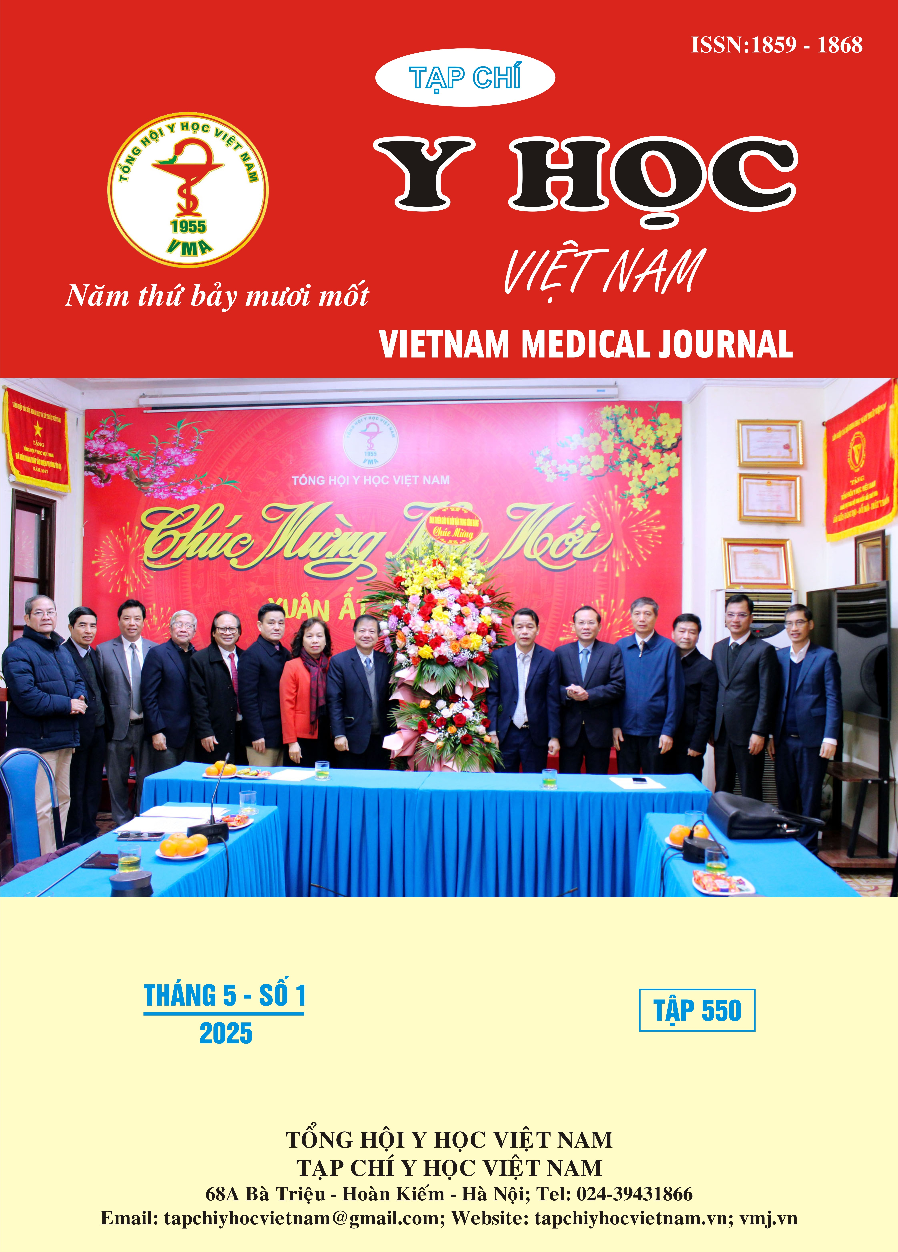PRELIMINARY ASSESSMENT OF THE EFFICACY OF RUXOLITINIB TREATMENT IN PRIMARY MYELOFIBROSIS PATIENTS AT THE NATIONAL INSTITUTE OF HEMATOLOGY AND BLOOD TRANSFUSION FROM 2019 TO 2024
Main Article Content
Abstract
Myelofibrosis is a clonal hematopoietic stem cell disorder, classified under the group of Philadelphia-negative (Ph-) myeloproliferative neoplasms, characterized by increased fibrosis in the bone marrow and extramedullary hematopoiesis. Recent advances in our understanding of the pathogenesis of this disease group have led to the development of new therapies. The JAK2 receptor and the JAK/STAT pathway have become new therapeutic targets for this group of diseases. Ruxolitinib, a small molecule inhibitor of JAK1/2, has been shown to be effective in reducing splenomegaly and improving symptoms in myeloproliferative disorders. Objective: To evaluate the therapeutic effects of Ruxolitinib on spleen size and systemic symptoms, and to investigate certain side effects in patients with primary myelofibrosis. Subjects: 18 patients with primary myelofibrosis treated with Ruxolitinib at the National Institute of Hematology and Blood Transfusion from January 2019 to July 2024. Research method: Case series description. Results: After 12 weeks of treatment, the average spleen size showed the greatest reduction, and by week 24, 94.4% of patients had a reduction in spleen length, with 16.7% of patients experiencing a reduction of more than 50%. By week 48, 33.3% of patients had a reduction in spleen size. More than 50% of patients experienced improvements in systemic symptoms, with 100% of patients reporting a reduction in itching, night sweats, and bone pain. The most common hematologic side effects were anemia and thrombocytopenia, with rates of 72.2% and 50%, respectively.
Article Details
Keywords
Ruxolitinib, primary myelofibrosis
References
2. Le Bousse-Kerdilès MC, Martyré MC French INSERM Research Network on Idiopathic Myelofibrosis Involvement of the fibrogenic cytokines, TGF-beta and bFGF, in the pathogenesis of idiopathic myelofibrosis. Pathol Biol (Paris) 2001; 49:153 –7.
3. Verstovsek S., Mesa R.A., Gotlib J. và cộng sự. (2012). Long-term treatment with ruxolitinib for patients with myelofibrosis: 5-year update from the randomized, double-blind, placebo-controlled, phase 3 COMFORT-I trial. J Hematol Oncol, 10, 55.
4. Harrison C.N., Vannucchi A.M., Kiladjian J.-J. và cộng sự. (2016). Long-term findings from COMFORT-II, a phase 3 study of ruxolitinib vs best available therapy for myelofibrosis. Leukemia, 30(8), 1701–1707.
5. Cervantes, F., et al. (2013). Reduction in spleen size with ruxolitinib in patients with myelofibrosis: A European phase 3 study. Leukemia, 27(9), 1804-1812.
6. Al-Ali H.K., Griesshammer M., le Coutre P. và cộng sự. (2016). Safety and efficacy of ruxolitinib in an open-label, multicenter, single-arm phase 3b expanded-access study in patients with myelofibrosis: a snapshot of 1144 patients in the JUMP trial. Haematologica, 101(9), 1065–1073.
7. Cervantes F., Ross D.M., Radinoff A. và cộng sự. (2021). Efficacy and safety of a novel dosing strategy for ruxolitinib in the treatment of patients with myelofibrosis and anemia: the REALISE phase 2 study. Leukemia, 35(12), 3455–3465.
8. Vannucchi A.M., te Boekhorst P.A.W., Harrison C.N. và cộng sự. (2019). EXPAND, a dose-finding study of ruxolitinib in patients with myelofibrosis and low platelet counts: 48-week follow-up analysis. Haematologica, 104(5), 947–954.


